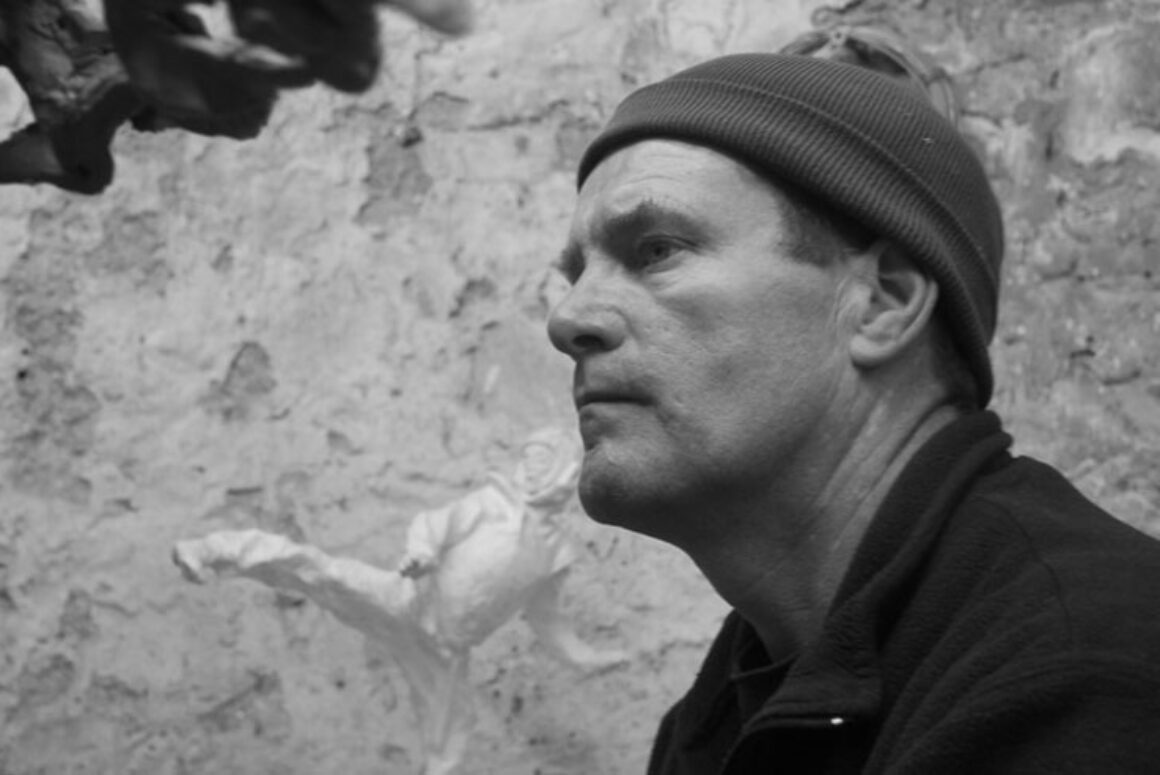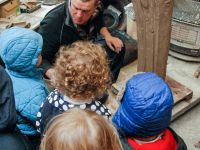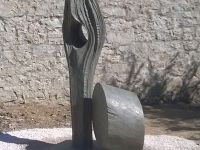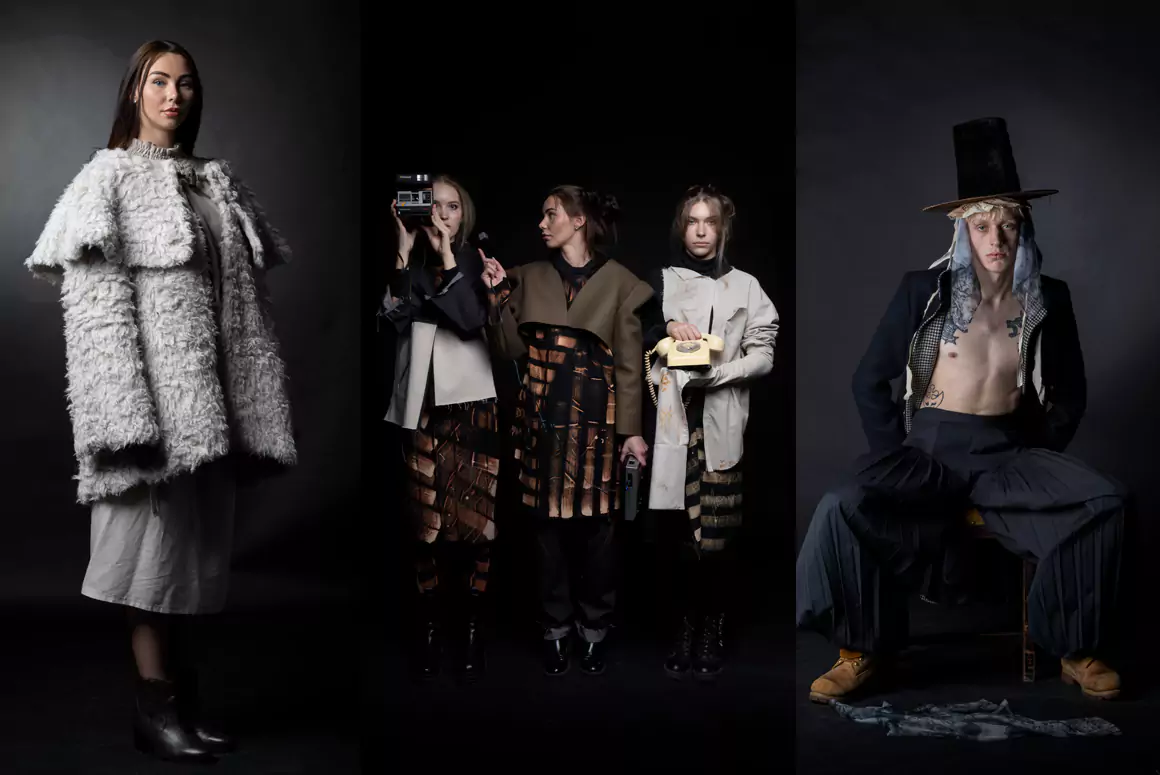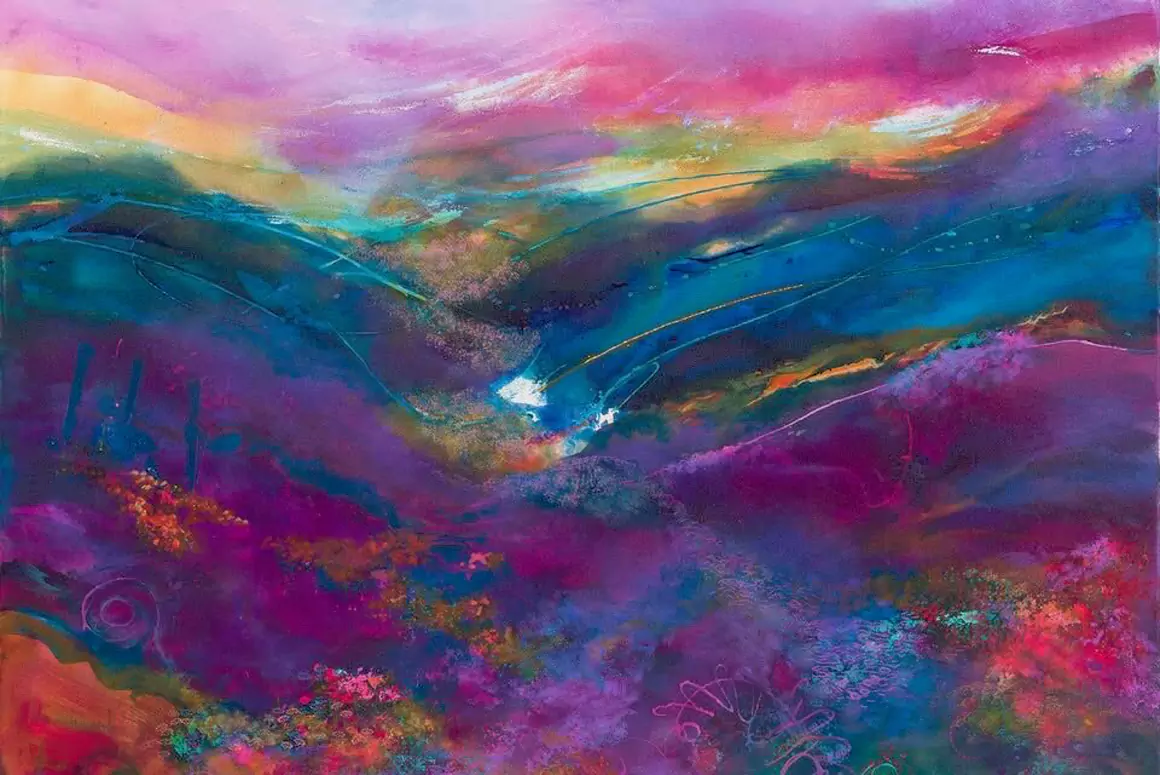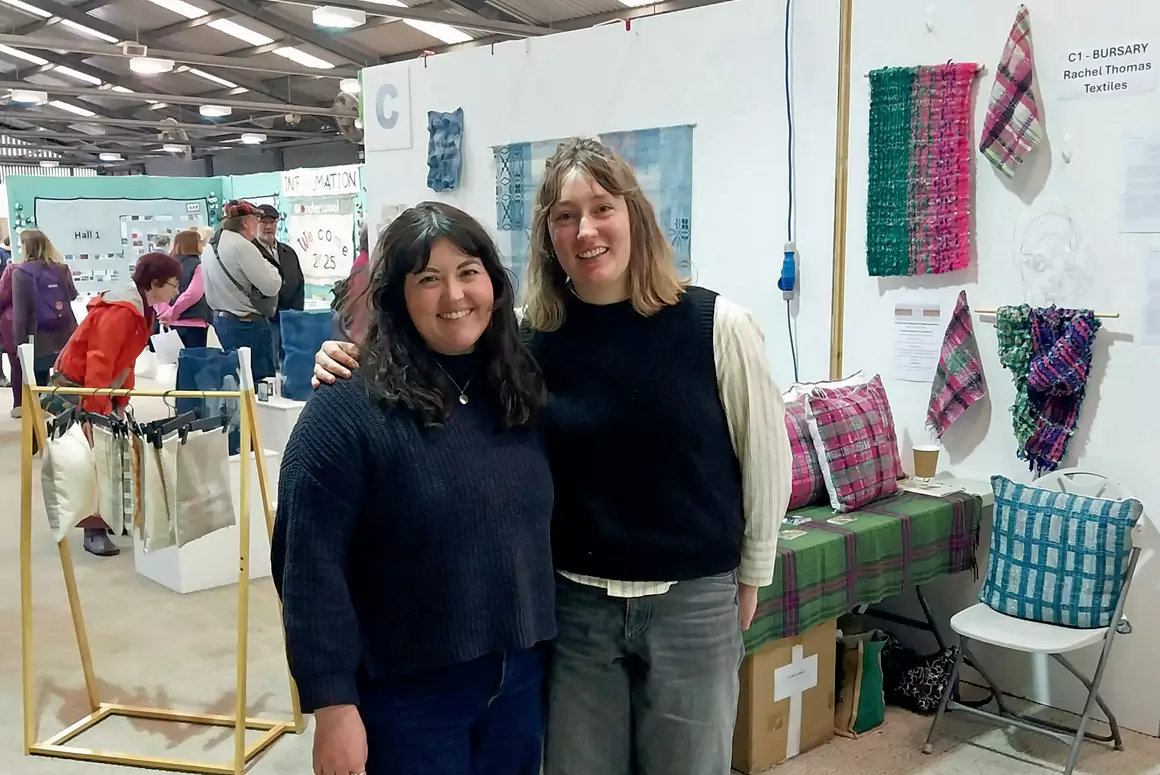![]()

In his stone-built studio, a woolly hat his only concession to the cold, he picks up a piece of split kindling wood, feeling its warmth and texture as he slowly turns it over in his hands. It opens like a book along the line of its fragile spine to reveal a gnarled and shrivelled knot hiding within the belly of a curve. Holding it to the light, he runs his thumb along the striations of its grain, studying the undulations of its form. Deep in thought, he places it on the windowsill and turns back to his latest work. He twists off a piece of modelling clay and rolls it briskly in the flat of his hands, his gaze intense and his movements quick and assured, as he builds the clay up onto the wire armature. Every action, every thought, is considered and deliberate.
It is in the shapes of found and natural objects such as this humble fragment of firewood that Nick Eames, sculptor, finds his inspiration. His work is held in some notable private collections, including that of HRH Prince Charles, and has been exhibited in public arenas across the UK.
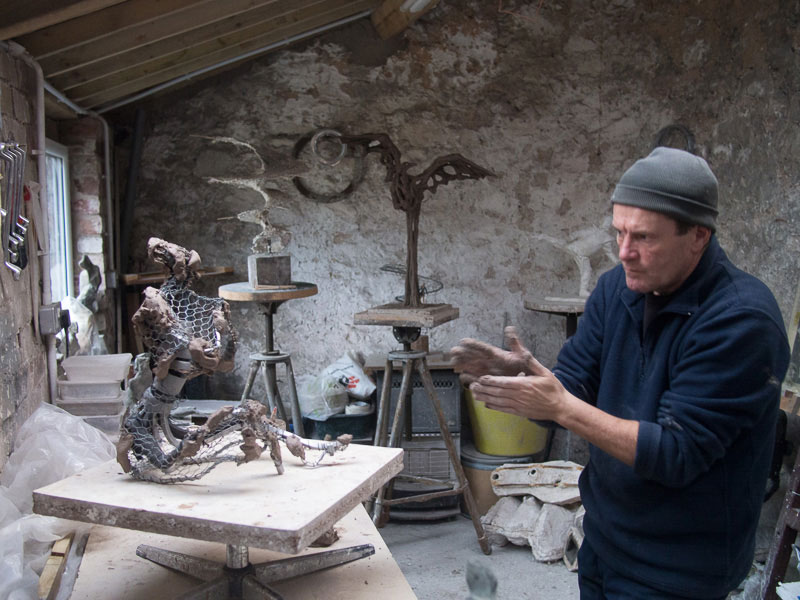
He grew up in the south of England, where he developed an early interest in sculpture, securing his first commission, for the London headquarters of Equitable Life, at the age of just sixteen. His first love, however, was dance, and ballet in particular. Having girlfriends in the profession gave him the opportunity to develop his interest in anatomy and movement by sketching and drawing dancers at the Royal Ballet, in London. The art form continues to be important in his life: his son, James, has since gone on to become a professional dancer, graduating from the Northern Ballet School in 2019, and his daughter, Lucy, is soon to graduate after studying dance at The Hammond School, in Chester. An early sculpture, The Dancer, is on permanent display at the Williamson Art Gallery and Museum in Birkenhead, saved from closure by public petition in 2020.
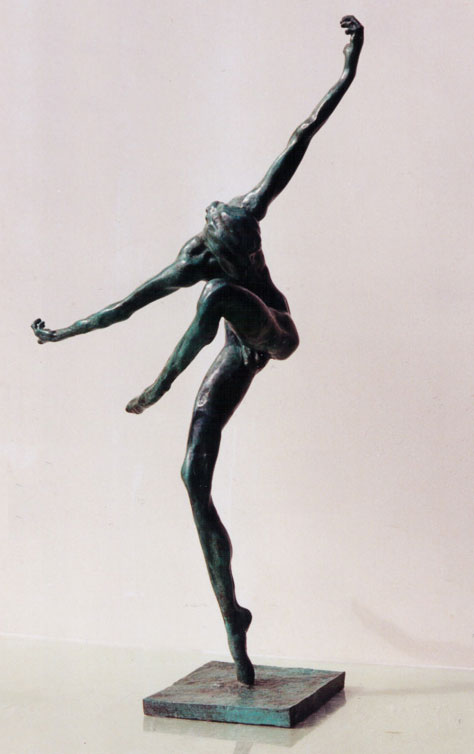
He enrolled at Maidstone College of Art in 1979, where Anthony Gormley was one of his tutors, becoming particularly interested in the figurative works of Rodin and Henry Moore. After graduating with a degree in sculpture in 1982, Nick ran his own mould making, casting and restoration business in South London, before moving to Liverpool in 1991, where he worked from a city centre studio whilst also lecturing part-time in Fine Art and Sculpture at the Bolton Institute. It was during this period that Nick became totally disillusioned by the machinations and internal politics of the established art world, and in 2002 he decided to relocate with his family to the rural village of Cilcain, in North Wales. The children were enrolled into the local primary school, Ysgol y Foel, and while they were pupils there, Nick put a lot of his sculptural work on hold to concentrate on private lessons and dry-stone walling.
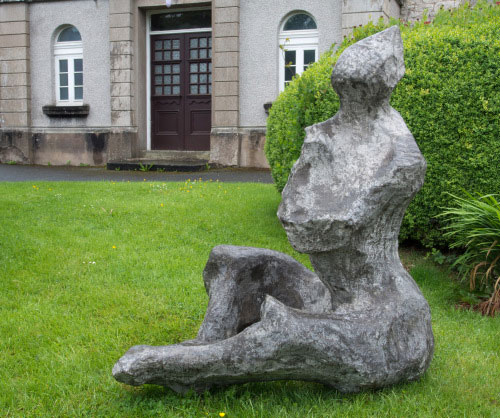
Nick has generously gifted two of his sculptures to his home village in recent years. Kokopelli, in the grounds of Capel Gad, is a depiction of a mythical native American, a healer, flute player and storyteller, who brings the promise of a fruitful harvest to every village that welcomes him in. The other, Buddies, which can be found in Cilcain Community Garden, was inspired by the children ‘buddying up’ on school visits to St Mary’s Church and the Millennium Woods in the village. The sculpture was created while James and Lucy were still at Ysgol y Foel, and bears the thumb prints of staff and pupils, together with those from members of the community, who were later invited to add theirs. It was finally installed on Saturday 4th August 2018, by a team headed up by Nick, which included his wife, Liz, James, Lucy, Tim Johnson, and local craftsman, Jon Bateson, who also worked with Nick on the large bench in the same garden, which was constructed from local stone and Welsh oak.
Nick builds each of his sculptures (including the monumental pieces) from the ground up, using a unique and environmentally friendly formula which he designed and perfected himself, which cures and sets to look like darkened stone. This method allows the sculptures to be created at an affordable cost, the skeletons built in situ with found and scrap materials. Nick is always keen to liaise with local crafts- and trades people in his projects, and he has been supported for the past few years by fellow Cilcain resident, Tim Johnson, whose assistance has been invaluable: besides working as Nick’s PA, he is also his design consultant, producing mock-ups for proposals, and formatting content for sculptural vacancies and commissions.
Nick’s most recent installation, The Sisters, is at Ellesmere Lake in Shropshire, and was commissioned as part of the ‘Children Displaced by Conflict’ Project. It is a permanent tribute to sisters Eglantyne Jebb and Dorothy Buxton of Ellesmere, who founded the Save the Children Fund in 1919. Although the installation was interrupted by the first Covid-19 lockdown in March 2020, the sculpture was eventually installed a couple of months later. Looking towards the future, Nick’s ambition is to create a meaningful mark in the landscape by developing a sculpture trail on selected sites of importance across North East Wales. These sculptures would be derived from the organic and sinuous forms found in the natural world, born of, and growing from, the land itself.
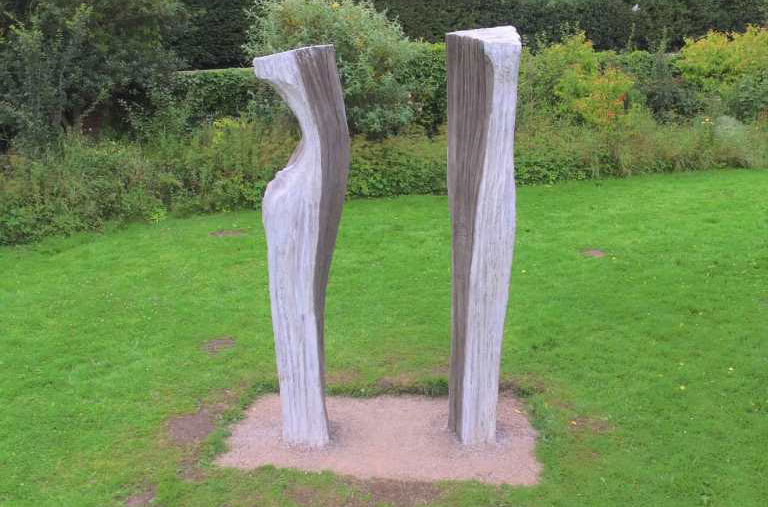
Nick continues to work in his quiet and determined way. Principled in his approach, and fiercely passionate, he has remained independent of means, and therefore of thought and artistic direction. His sculptures are deeply personal responses to the people and the landscapes which move him to creativity, the beauty and emotion he sees in shape and form made real, sculpture as a gracious, never-ending dance.
To learn more about Nick Eames and his work, please visit nickeamessculptor.com


